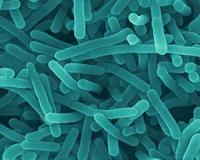 |
Shanghai (AFP) Dec 10, 2010 Shanghai authorities have ordered fruit vendors to stop selling oranges that have allegedly been dyed with a toxic wax, Chinese media said Friday, in the country's latest food safety scare. The Shanghai government has ordered tests on the oranges after consumers complained their skin was turning red after coming in contact with oranges sold in local markets, the Oriental Morning Post reported. "Tissues turn red when you wipe them and if you hold the oranges in your palm, it will turn red," a consumer surnamed Hu told the newspaper. An unnamed seller at a wholesale agricultural products market told the newspaper that some oranges had been dyed with a toxic industrial wax so "they look fresher and sell at higher prices". Shanghai authorities have ordered sellers to pull the oranges off their shelves and are conducting tests, the report said. It was unclear whether the oranges were dyed by sellers in the city or producers in Jiangxi province in eastern China, the report said. Industrial dyes can damage people's memory, immune systems and cause respiratory problems, the newspaper said. The Chinese government has come under increasing pressure from its citizens as well as countries such as the United States and Japan to improve the standard of its food and medicines. In a scandal in 2008, at least six children died and around 300,000 fell sick after consuming milk powder laced with the industrial chemical melamine, which was added to make products appear higher in protein.
Share This Article With Planet Earth
Related Links Farming Today - Suppliers and Technology
 Nanoparticle Gives Antimicrobial Ability To Fight Listeria Longer
Nanoparticle Gives Antimicrobial Ability To Fight Listeria LongerWest Lafayette IN (SPX) Dec 09, 2010 A Purdue University research team developed a nanoparticle that can hold and release an antimicrobial agent as needed for extending the shelf life of foods susceptible to Listeria monocytogenes. Yuan Yao, an assistant professor of food science, altered the surface of a carbohydrate found in sweet corn called phytoglycogen, which led to the creation of several forms of a nanoparticle that c ... read more |
|
| The content herein, unless otherwise known to be public domain, are Copyright 1995-2010 - SpaceDaily. AFP and UPI Wire Stories are copyright Agence France-Presse and United Press International. ESA Portal Reports are copyright European Space Agency. All NASA sourced material is public domain. Additional copyrights may apply in whole or part to other bona fide parties. Advertising does not imply endorsement,agreement or approval of any opinions, statements or information provided by SpaceDaily on any Web page published or hosted by SpaceDaily. Privacy Statement |